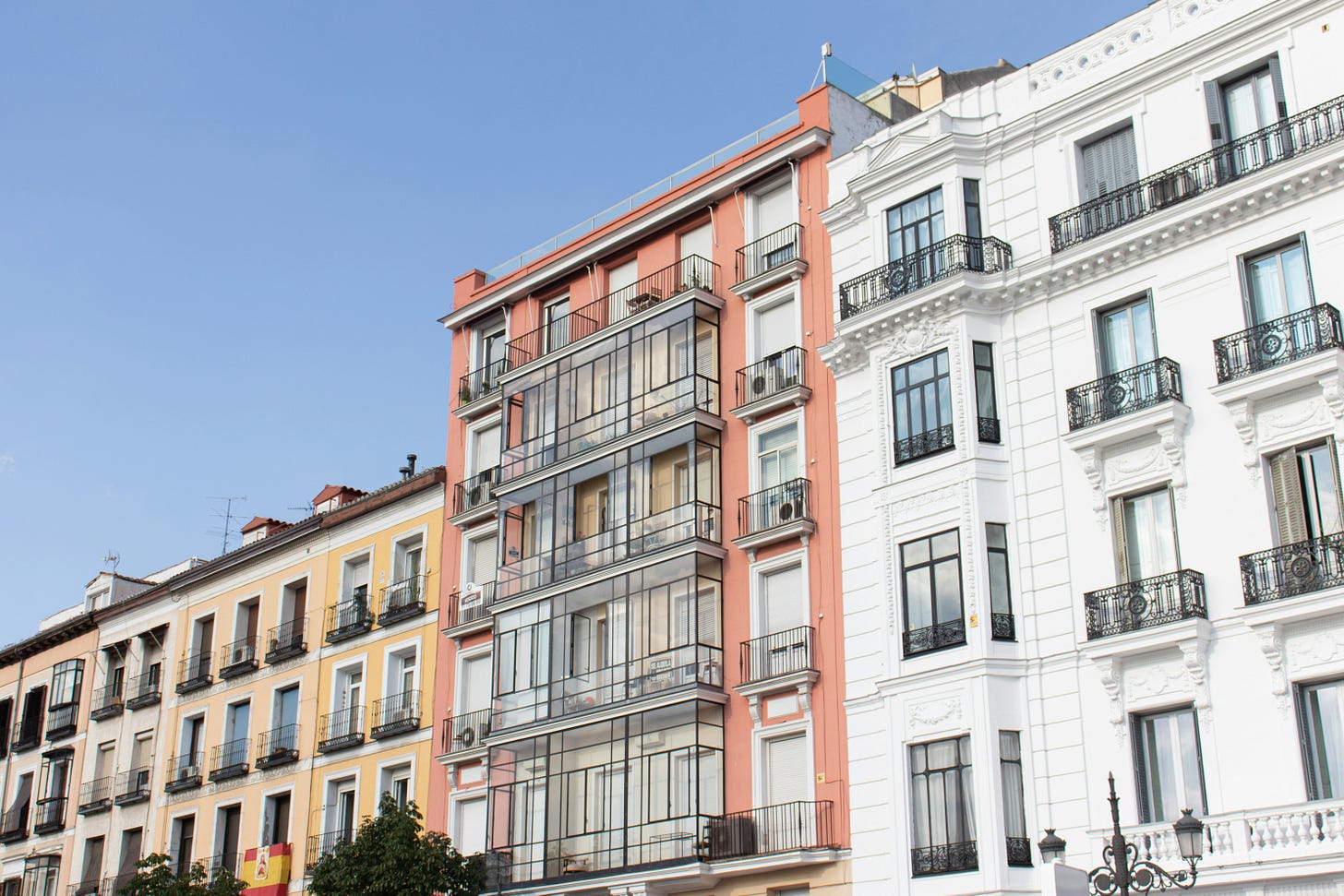5 Reasons We’re Not in a Property Bubble
And why it will get even more expensive before it gets better 🥳
Madrid | July 16, 2025 (Updated Dec. 11, 2025)
🇪🇸 The Bubble is Spain's #1 English-language, bestselling newsletter. We offer paid subscriptions, and we’d be thrilled to have your support!
🚨 This is one of The Bubble’s expanded feature articles that dive in depth into the most pressing issuing Spain faces today. (To read the entirety of our deep-dive articles, you will need a paid subscription.) We’d love to hear from you about this piece via a “like” or comment. Enjoy!

We wish we had better real estate news, but…
By now you’ve heard it in the checkout line, on the terraza, or shouted by someone rage-scrolling Idealista: Spain is in a housing bubble. Prices are too high. Wages haven’t kept up. The market is irrational. It feels like 2008 all over again. We’re all going to die!
Except it isn’t like that (well, we will all die—just ask Sen. Joni Ernst). And if you’re holding your breath for the crash, you might want to exhale. Slowly.
This is not a speculative bubble fueled by cheap money and bank-issued opium like the 2007-8 crash, when half of Spain seemed to buy a second house in the España profunda or some beach where no one goes before realizing, as the economy slowed, ”¡Jolín! I don’t have the money!”
Instead, it’s a chronic shortage of housing in the places cities people actually want to live, made worse by surging demand, shrinking supply, and government policy that seems specifically designed to make absolutely everything worse.
What does that mean? Spanish housing prices have risen 77% since 2014, according to Oxford Economics. The price of an already existing home (i.e. not new) rose 18.8% year-over-year in November—the biggest recorded rise ever—according to real estate portal Fotocasa. And so? People who would have bought in the past now rent—in 2024, 20.4% of Spanish households were renting, up from 14.9% in 2014—and those who used to rent? They commute to work from Farawayistan, or live in Chez MamiyPapi.
And prices? They’re going to keep rising.
Let’s break it down—because, honestly, if we don’t, who will?
1. 👶 The population is growing. Fast.
Spain is having a growth spurt—and it has nothing to do with birth rates (though we do like that baby emoji). This is an immigration story. In 2024, Spain’s population jumped by more than 508,000, hitting a record 49.1m. All of that increase came from foreign born people, according to the national INE statistics service.
That’s not a one-off. In just five years, Spain has added over 1.7m residents (we’re now at 49.4m), almost the population of Barcelona—and about 97% of those new residents are foreign born. And where are these newcomers heading? Not Teruel.
The growth is concentrated in job-rich regions like Madrid, Barcelona, Málaga, and Valencia. The kind of places where housing is already tight. The kind of places where you’re competing with other buyers, renters, tourists, foreign investors, and—god forbid—a remote worker from Amsterdam with a relocation bonus and the desperate need to be near a beach.
“If 500,000 more people arrive in Spain each year, many of them in very limited locations…this creates the perfect combination for housing prices to continue rising,” says Antonio de la Fuente, director at Colliers. “We estimate that prices will rise several percentage points above inflation.”
This isn’t irrational exuberance. It’s math: more people chasing too few homes.
2. 🏗️ We are not building nearly enough
Yes, Spain is building more than it was during the pandemic. In 2024, the country issued 127,721 permits for new housing—up 17% from the year before, and the highest number since 2008, according to El País.
Sounds impressive—until you consider that Spain faces a 600,000-home deficit, according to the Banco de España, and was permitting 900,000 units a year during the real estate boom (and bubble) of the early 2000s. The result? Between 2022 and 2024, the number of new households exceeded the numbers of new homes by 3-to-1.
Even when homes do get built, delays are long. There’s not enough land zoned for residential. Permitting can take well over a year. And dense urban construction (you know, where people actually live) is the hardest to greenlight. That doesn’t mean cities aren’t trying—a new Madrid law allowing offices to be turned into housing without redoing zoning laws has so far led to licenses for 1,500 new units. But that’s a small number, and even that takes time.
CaixaBank Research and CBRE both see housing permits rising this year—but only to the range of 135,000-140,000. And Madrid and its metropolitan area are at work on large-scale projects like Madrid Nuevo Norte, Valdecarros, Los Berrocales, Los Ahijones, Los Cerros and Valgrande, with over 200,000 homes between them (many with affordability protections). But they are years (if not a decade) from completion.
And you know what makes it worse? The Bank of Spain estimates that the country needs 1.5m more “social” (government subsidized/affordable) housing units. Only 1% of Spanish housing is “social”, putting it at the tail of Europe.
If this is a building boom, it’s the slowest boom in European history.
3. 🏚️ Yes, there are millions of empty homes. No, they’re not where you need them.
Every time someone dares mention housing scarcity, someone else retorts: But there are 4 million empty homes in Spain!
They’re not wrong. But they’re not right, either.
Keep reading with a 7-day free trial
Subscribe to The Bubble Newsletter to keep reading this post and get 7 days of free access to the full post archives.


